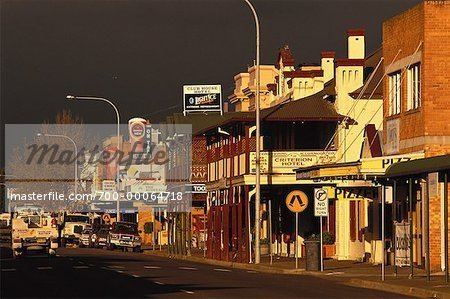Population 16,921 (2015) Elevation 40 m | Postcode(s) 2330 Postal code 2330 | |
 | ||
LGA(s) Singleton Shire Council Weather 22°C, Wind S at 10 km/h, 90% Humidity Points of interest Singleton Sundial, Singleton Historical Society, Rose Point Park | ||
Singleton is a town on the banks of the Hunter River in New South Wales, Australia. Singleton is 197 kilometres (122 mi) north-north-west of Sydney, and 80 kilometres (50 mi) northwest of Newcastle. At June 2015, Singleton had an urban population of 16,921.
Contents
- Map of Singleton NSW 2330 Australia
- History
- Climate
- Transport
- Economy
- Radio
- Television
- Tourism
- Heritage sites
- Education
- Notable people
- Sister city
- References
Map of Singleton NSW 2330, Australia
Singleton's main urban area includes the town centre, Singleton Heights, Dunolly, Darlington, The Retreat, Wattle ponds and Hunterview. Surrounding rural villages include Broke, Camberwell, Jerrys Plains, Goorangoola/Greenlands and Belford.
Singleton is located on the north-eastern part of the geological structure known as the Sydney basin, which borders the New England region.
History
Singleton was established in the 1820s by John Howe. In its early years, it was also called Patrick's Plains. The Main Northern railway line reached Singleton in 1863 and was the end of the line until 1869. The town retains many historic buildings, including the original court house built in 1841, various large churches and many traditional Australian pubs. The countryside surrounding Singleton contains an unusual number of fine old mansions, reflecting the aristocratic nature of land grants when the area was settled. They include 'Neotsfield' (1828), the elaborate 'Baroona' (1829), 'Abbey Green' (1865) and stunning 'Minimbah' (1877).
Singleton was subject to the major flooding of the Hunter River in 1955, causing extensive damage to the town. When the area was being settled, the government originally attempted to create a town at Whittingham in a flood-free area, but the town grew by the river nonetheless. An embankment was constructed following the 1955 floods to help protect the town against any future flooding.
Climate
Singleton has a humid subtropical climate with hot wet summers and cool drier winters.
Transport
The town is located at the junction of the New England Highway and Putty Road. The Golden Highway branches northwest from the New England Highway ten kilometres south of Singleton. Singleton is also served by local and long-distance rail services. Singleton railway station on the Main Northern railway line is located at the southern end of the town centre. There are also bus services, both intercity and local.
Economy
Major industries near Singleton include coal mining, electricity generation, light industry, vineyards, horse breeding and cattle production. Dairying was once a mainstay in the area, but has declined.
The largest employment industry is coal mining, which employs 24 percent of the town's workforce. Defence is the second largest employer with almost 4 percent of the workforce.
The Lone Pine army barracks is located 8 kilometres (5.0 mi) south of Singleton.
The Singleton Argus is a bi-weekly newspaper which was established in 1874. It is currently owned and published by Fairfax Media. The weekly newspaper that serves Singleton and the Hunter Valley is The Hunter Valley News, which, along with the Newcastle Herald newspaper (daily, except Sundays), is published by Fairfax Media.
Radio
Radio Stations serving both Newcastle and the Hunter Valley can be received in Singleton.
Television
Singleton is part of the Newcastle-Hunter Region television market, which is served by 5 television networks, three commercial and two national services (which include new sub-channels that started in 2009 for the commercial networks and in recent years from the national services).
Tourism
Heritage sites
Singleton Shire contains a number of buildings and other sites that are on the Register of the National Estate
Education
Singleton is home to a number of educational facilities. These include schools operated by NSW Department of Education and two non-government schools at both Primary and Secondary levels; as well as a TAFE campus, Singleton Community College and a number of pre-schools. St Catherine's Catholic College provides classes from kindergarten to year 12, while Australian Christian College has classes from pre-kindergarten to year 10.
Schools operated by NSW Department of Education include:
Hunter Institute of TAFE operates a campus in Singleton. It provides training and further education as well as collaborating with secondary schools for students completing Senior years.
Notable people
Sister city
Japan - Takahata, Yamagata, Japan
